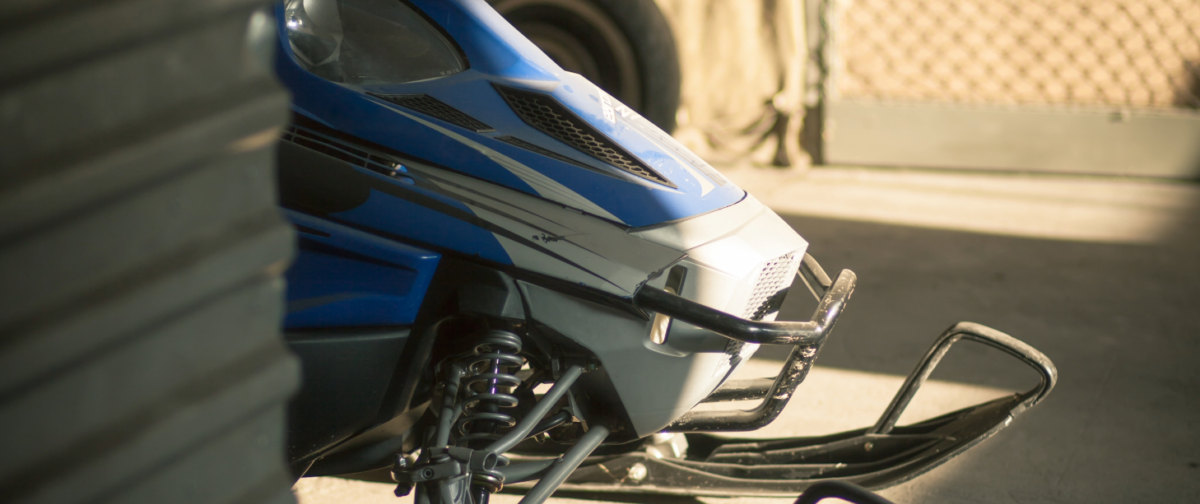
How to Store Your Snowmobile for a Smooth Start Next Year
Many people are more than happy to see the last of the snow melt away, but snowmobilers raise an exception.
Perhaps you have other ways to fulfill your power sports needs (like a drift trike or an ATV), but regardless, putting your snowmobile away for the summer can be a blow.
The least you can do for your faithful sled is make sure it’s fully prepared for storage and will be ready to go when winter rolls around again.
We’ve put together a guide to walk you through the process of preparing your snowmobile for summer storage. You’ll note that some of the steps vary or can be skipped altogether depending on your sled and your exact storage strategy, so keep an eye out for those!
It’s also worth mentioning that if you have the owner’s manual for your snowmobile, you should check it to see if it recommends any specific storage procedures.
That said, sometimes manuals get lost, or perhaps you purchased your sled used and never had it to begin with. In that case, these tips should be helpful.
You can also click the link to get our printable snowmobile storage checklist. It's available at the bottom of the page as well.
Snowmobile storage: the quick version
If you want a big-picture outline of the steps we'll be covering, we've got your back. Click the links provided to jump straight to any section where you want more details.
- Clean off your snowmobile
- Inspect your unit
- Add fuel stabilizer OR drain the tank
- Lubricate your snowmobile
- Consider fogging your engine
- Change oil and oil filter
- Clean power valves
- Change chaincase oil
- Remove drive belt
- Remove the battery
- Refill emergency kit
- Check helmet and other clothing items
- Store your snowmobile
Why you need to perform pre-storage maintenance for your snowmobile
While doing pre-storage maintenance is crucial for all kinds of outdoor power equipment, from your lawnmower to your ATV to your boat, it’s especially important for a snowmobile.
Failing to properly summerize your snowmobile (yes, autocorrect, we do in fact mean “summerize”) means you’re more likely to run into issues the following winter.
Why? Because of the sheer length of time your sled spends in storage. The fact that your snowmobile will likely be sitting for long portions of the year means that existing issues like rust, corrosion, or breakdown of old fuel have extra time to grow worse and wreak havoc.
This translates into you spending precious time and money fixing issues yourself (or getting them fixed by a professional) and having less time to be out on the powder.
Plus, in the long run, properly maintaining your snowmobile year after year will help to extend its life.
So, unless troubleshooting a non-starting snowmobile or shopping for a new one are on your list of passions, we highly recommend following the steps laid out below.
Clean off your snowmobile

When it comes to maintaining power equipment, grease and wrenches are more likely to come to mind than soap and water. Even so, giving your snowmobile a thorough wash (and dry!) before sending it into off-season storage is a good idea.
Dirt, salt, and other gunk left to sit will only be more difficult to clean off if you wait all year to do it, and it can potentially corrode components of your snowmobile, increasing the need for touch-ups or repairs.
After cleaning and drying your snowmobile, you can use a silicone spray on the plastic elements like the hood, lights, and seat to give them extra protection.1
Inspect your unit
You work hard and you play hard, but you want to make sure that doesn’t have an adverse effect on your sled.
Now is the time to check that the parts on your snowmobile are in good condition—not rusted, hanging on by a thread, or otherwise in need of attention and repair.
If you need replacement parts for your snowmobile, check out our selection of power sports equipment parts. We might just have what you need. Plus, we offer free shipping to the Lower 48 States and a one-year warranty against manufacturer defects.
Add a fuel stabilizer (probably)
If you’ve taken care of small engines before, you’re probably used to draining your fuel tank completely or adding a stabilizer whenever you’re preparing your equipment for storage.
Not doing either of these (i.e., letting plain gas just sit in the tank) can seriously mess up your equipment. As gas sits, it tends to deteriorate and leave behind a sticky varnish that causes clogs in your fuel system. If the issue is bad enough, you’ll have trouble starting your engine or keeping it running.
However, when it comes specifically to snowmobiles, the recommendation is generally not to drain your tank but rather to add a fuel stabilizer. Then run your engine for a few minutes so that the newly stabilized fuel can circulate.
The logic behind this choice is that in fuel-injected snowmobiles, the presence of gas will help to keep components in your fuel system properly lubricated.2
However, not all snowmobiles have a fuel-injected system. Older models (meaning those produced before the mid-2000s) could be carbureted instead.3
If you do happen to have a carbed snowmobile instead of one with an EFI system (electronic fuel injection), then you could drain leftover gas instead of adding a stabilizer.
In short, EFI snowmobile: add a fuel stabilizer. Carbureted snowmobile: remove the fuel.

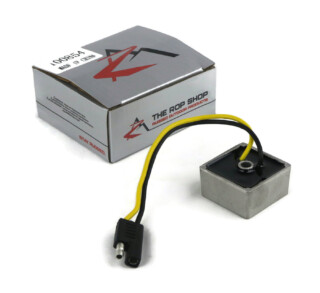

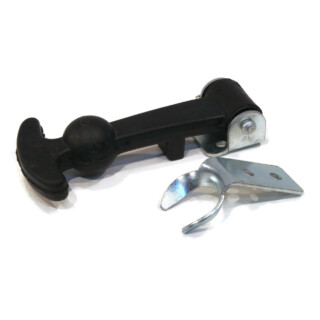

Lubricate your snowmobile
No one likes the sound of metal on metal, least of all your snowmobile.
Locate the grease zerks on your unit and hook them up to a grease gun. Pump until you see a bit of grease coming out of the zerk—this way, you’re ridding those grease points of potentially damaging moisture.4
Note that newer models of snowmobiles don’t feature quite as many grease zerks.4
This means that if you have an older model, you should take extra care to locate all of the grease points so you don’t miss out on vital lubrication.
You can also spray WD-40 on any other metal parts of your snowmobile that need some lubrication. Just be sure to avoid getting it on the clutch or belts.
Fog your engine (maybe)
Fogging your snowmobile’s engine is a bit of a “choose your own adventure” scenario, and we’ll explain why.
First, engine fogging is really only necessary for two-stroke snowmobile engines and/or those that don’t have EFI.5
Secondly, even if you do have such a snowmobile, it doesn’t strictly have to be done.
If you’d like to turn on your snowmobile and let it run for a few minutes every month (as some snowmobile owners do), then fogging your engine isn’t necessary.5
So, depending on the engine type of your snowmobile plus your willingness to run your sled every few weeks, you can fog or not fog.
Of course, we’d also recommend sticking with whatever is laid out in your owner’s manual, since those instructions are made with your unit in mind.
Change your oil and oil filter
If you have a four-stroke snowmobile engine, now is a good time to get the oil and the oil filter changed. They’ve been collecting impurities that you don’t want to let sit for months and months.
Clean the power valves
It’s recommended to clean your snowmobile’s power valves before sending it off into summer storage. Otherwise, the carbon deposits that have accumulated on them will simply harden and be more difficult to clean off.1
Change the chaincase oil

Over time, your chaincase oil will collect bits of metal that can cause a problem in your sled if left there.
You don’t want that, so take the time during your off-season snowmobile prep to change out the chaincase oil.
The procedure is fairly simple, basically consisting of four steps:
- Remove drain plug and let the oil drain into a container.
- Replace the drain plug.
- Remove the fill plug and add oil to your snowmobile (check your owner’s manual to find exactly how much and what kind).
- Replace the fill plug.
Did you notice a silvery sheen to the oil that was drained? That’s from metal accumulating in the oil, so you did this crucial task at the right time.
Remove your drive belt (potentially)
Another optional step you can take when you’re summerizing your snowmobile is taking out the drive belt. Don’t do this if you’re going to run your sled every month during the off-season, however.5
Remove the battery
It’s not smart to let batteries just sit unused for long periods of time. You’ve probably removed the batteries on your outdoor power equipment before, knowing that the cold temps can sap the charge quickly.
Even though cold weather is less of an issue here (since that’s the kind of weather where you’re actually using your sled), it’s still good practice to remove the battery to help it last longer.
You can hook the battery up to a trickle charger to help it maintain its “juice” throughout the months your snowmobile is in storage. Make sure that it's somewhere warm and dry.
Refill your emergency kit
Do you take a stash of spare parts or a first aid kit out with you when you’re snowmobiling? Now is a good time to check it and restock any parts that are missing. Come next winter, you’ll be ready to go right away.
(Let’s be honest: if you don’t do it now, what are the chances that you’ll remember to do it later? You'll likely be doing it at the very last second if you wait.)
Check your helmet
Of all the things on your snowmobile that need to be protected, you are at the top of the list.
With that in mind, make sure that your snowmobile helmet is still in good shape and can be used for the upcoming season.
If your helmet has breathed its last, grab a replacement now while you have the luxury of shopping around instead of frantically searching for a suitable one the day before a trip.
While you’re at it, check your other snowmobile clothing (like your gloves, suit, and boots) to make sure they’ll be usable next season—not ripped or worn to threads.
Don’t forget: wearing cotton when you’re snowmobiling is a bad idea. It will collect water and freeze.
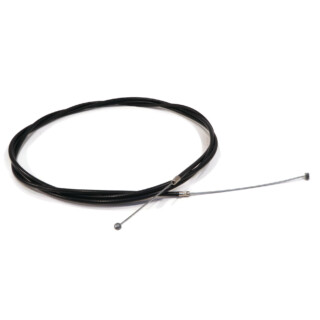
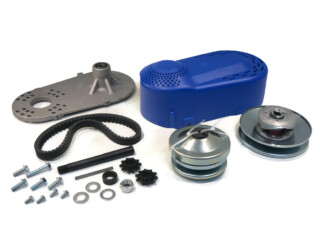

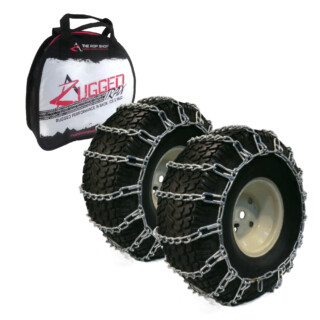

Store your snowmobile
You’re almost done! With the maintenance aspect complete, it’s time to figure out the storage situation for your snowmobile.
Where to store your snowmobile
Ideally, you should keep your sled somewhere indoors to protect against sun damage, rust-causing moisture, and dirt.
If you do have to store it outdoors—not everyone has a garage or shed, after all— you’ll definitely want to cover it to add a little more protection, but be sure that you use a material that won’t trap moisture. That’s the opposite of what you want.
How to store your snowmobile
Once your snowmobile is in its designated storage spot, you’ll probably want to store it a bit raised. This helps to ease tension on the suspension system.
There are specialized stands for this that you can use, but you can also DIY a solution using wood crates or similar materials.
Another way to prolong the life of your snowmobile’s suspension system: unhook the springs.
Next, see what you can do for your snowmobile to deter critters from nesting in it. Some recommend keeping mothballs or dryer sheets in or on your sled.
If you block off any components of your snowmobile (such as your exhaust outlet) to keep animals from turning it into an apartment complex, make sure to leave yourself a note of what areas you’ve obstructed and remove the blockages the next time you run your snowmobile.
Finally, cover your snowmobile, even if you sprung for indoor storage for it.
Snowmobile summer storage is complete—what now?
Give yourself a pat on the back. You successfully stored your snowmobile and can look forward to a smoother start-up the next time snow falls.
Maybe you’re counting down the days until that happens and are already making preparations for your next snowmobile trip. However, if you need something to be excited about a little sooner, now is the perfect time to awaken your other power equipment from its winter slumber.
Get started with one of our blogs:
Plus, if you’re itching to go off-roading during the upcoming warm weather, brush up on your knowledge with these off-roading tips.
Snowmobile storage checklist
If our printable checklist isn't displaying below, you can find it here.
- https://blog.amsoil.com/snowmobile-summer-storage-checklist/
- https://www.discountramps.com/how-to/powersports/prepare-snowmobile-for-storage/a/b109/
- https://powersportsguide.com/snowmobile-fuel-injection/
- https://snowgoer.com/snowmobile-tech-tips/prepping-a-snowmobile-for-the-off-season/9055/
- https://www.caproskis.net/putting-your-sled-to-bed-how-to-prepare-your-snowmobile-for-summer-storage/
- https://blog.amsoil.com/how-to-change-snowmobile-chaincase-oil/

Having trouble using your ROP Shop pressure washer surface cleaner? These tips can help you out.

Thinking about getting a pressure washer? Here are eight advantages to owning a pressure washer to help convince you.

Installing a new pressure washer pump doesn’t have to be a hassle. Let The ROP Shop walk you through it.

Ready to learn how to pressure wash quickly, effectively, and safely? Check out these eleven tips.